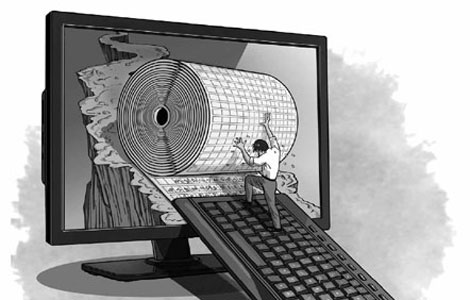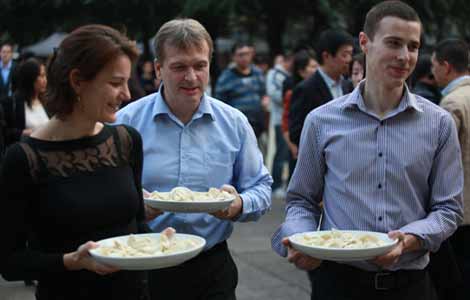Foreign products costlier in China
Updated: 2013-10-16 09:32
(China Daily)
|
|||||||||||
A survey conducted by a foreign media outlet shows that a cup of coffee at Starbucks costs more in Beijing than in other cities, such as Tokyo, New York City, London and Hong Kong. This is ridiculous, because Beijing's per capita real and disposable income is much lower than that in the aforementioned cities, says an article in Guangzhou Daily. Excerpts:
The price difference is not restricted to a cup of Starbucks coffee alone. For instance, a scoop of Haagen-Dazs ice cream in China costs about 30 yuan ($4.9) when one can buy a medium-sized tub of the ice-cream for only 50 yuan in a Canadian supermarket.
So why have even ordinary foreign-brands become high-end products in China? It's not because Chinese people are rich enough to afford such high prices. According to the International Monetary Fund, the per capita GDP of the Chinese mainland is $6,629, far less than $51,248 of the US.
A Starbucks outlet has to factor in material and operational costs. There may be little difference in material cost in this age of globalization, but the operational cost in China is definitely much lower than in the US. Although high taxes and logistics costs are ultimately transferred to consumers in the form of higher prices, the major reason for the high prices of foreign products could be attributed to Chinese people's consumption attitude. Driven by the blind pursuit of profit, Starbucks has positioned itself as a brand that offers better lifestyle, rather than products, to charge high prices.
To eliminate the price difference, we have to establish a free and fair market, lower taxes (the main factor responsible for high prices of foreign products) and establish a rational market environment that respects consumers. More importantly, Chinese brands have to improve their products to take on their foreign counterparts in the battle for market share.
(China Daily 10/16/2013 page9)
Related Stories
Rising prices pressure shoppers 2013-10-15 07:37
Polarized home price predictions confuse buyers 2013-10-07 13:28
Price control a must for Chinese publishing 2013-10-04 08:57
Realty prices vs Chinese Dream 2013-09-18 07:49
Today's Top News
Renewed move to streamline bloated sectors
Most EU urbanites breathe in pollution
Cooking fumes debated as cause of pollution
Agreements with UK to boost wider use of yuan
Nation honors father of Xi Jinping
$100b trade target for 2017
Info transparency vital for image
Holding up a mirror to the economy
Hot Topics
Lunar probe , China growth forecasts, Emission rules get tougher, China seen through 'colored lens', International board,
Editor's Picks

|

|

|

|

|

|





